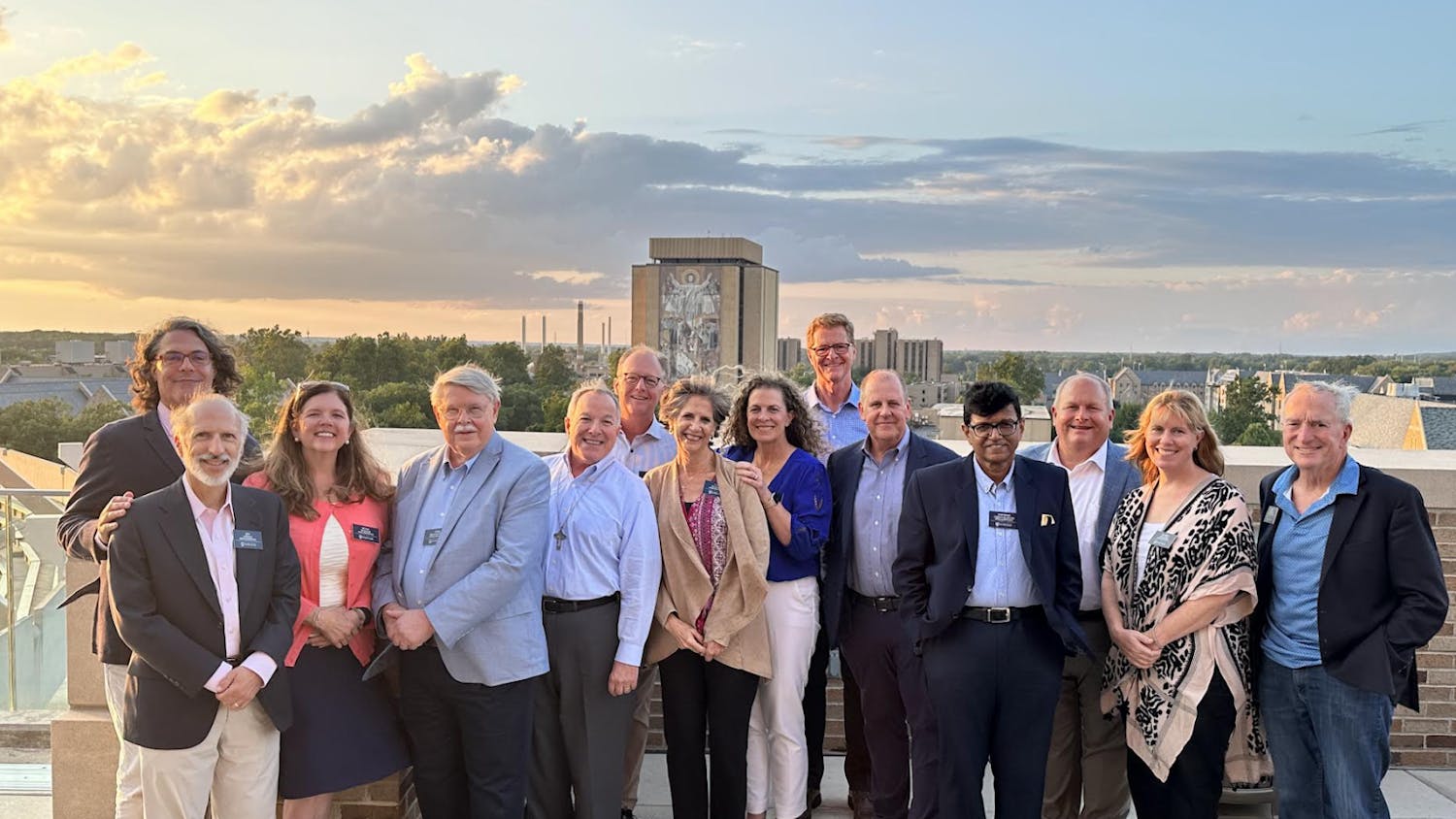Part four of the five part documentary mini-series, titled "Women, War and Peace," aired Tuesday on PBS. The series, which focuses on women's roles in warfare, was produced in part by Nina Chaundry, who spoke on a panel Tuesday about the documentaries.
"The creators of the series, Pamela Hogan, Abigail Disney and Gini Reticker, first met about the project in the fall of 2007," Chaundry said. "They had each individually noticed a similar trend in reporting: a focus on the men and the guns and a dearth of stories about the women and families who are disproportionately targeted in today's conflict zones — but seldom covered in news reports."

Chaundry said the idea for the film series was born after this conversation.
"Disproportionate attention has been paid to men in conflict, and we hope that this series is the beginning of a dialogue and that more films and more reporting will look at conflict through women's eyes," she said.
When choosing the stories to tell in the documentary, she said the producers and filmmakers wanted to give underreported stories the attention they deserve.
"Deciding which conflicts to cover was one of the most difficult decisions we had to make," she said. "We researched stories around the world, including Asia, Central America, Chechnya, Georgia, Israel and Palestine, Northern Ireland, Congo, Sudan, Guinea as well as the stories in Bosnia, Colombia and Afghanistan."
After all their research was collected, the filmmakers decided to tell the story of how war had changed in the last 20 years since the end of the Cold War, Chaundry said.
"Since the end of the Cold War, it has become more dangerous to be a woman in a conflict zone than a soldier," she said.

The filmmakers wanted to make sure to demonstrate this was a global occurrence, Chaundry said. They did this by committing to covering as many regions of the world as they could.
The films focused on four countries, with a final piece tying all the themes together and discussing how war has changed in a post-Cold War world.
"I Came to Testify," the first episode of the mini-series, told the story of how 16 Bosnian women testified against their rapists in international court.
"We decided on Bosnia, because it was the first time that women were successful in getting rape prosecuted as a war crime, setting a major precedent in international law which is now being used globally," Chaundry said.
She said the process of finding and interviewing the women for "I Came to Testify" was a very delicate process.
"Filmmaker Pamela Hogan and her associate producer Jessie Beauchaine initially reached out to the investigators and prosecutors that the women had trusted from The Hague," Chaundry said. "When Hogan and Beauchaine first met the women, they then had to gain their trust, which was no easy task."
The women did not particularly want to talk to journalists and even suffered from headaches and other physical ills because telling their story is so traumatizing, Chaundry said.
Chaundry said building relationships with these women was difficult, but a journalist's emotions can help build trust and rapport.
"As journalists we are charged with being objective storytellers, but it's impossible to check your emotions, especially when you are covering such intimate stories," she said. "In fact, I find it's important to allow yourself to have the emotions. It's essential for building trust and rapport with the people you are filming."
The second week's episode, "Pray the Devil Back to Hell," was a film already made by Abigail Disney.
"We already knew that the series would include ‘Pray the Devil Back to Hell,' the story of the women who came together and brought an end to the civil war in Liberia," Chaundry said.
Week three's episode, "Peace Unveiled," focused on Afghanistan, where the filmmakers tell the story of female activists.
"We felt obligated as Americans to tell the story of women in a conflict in which we were directly involved," she said.
Filming in Afghanistan posed some very real security problems, especially in the Kandahar region when interviewing women's rights activist Shahida Hussein, Chaundry said.
"We exercised extreme caution in that case and respected the wishes of the activist Shahida Hussein," she said. "At one point in the filming, she asked that she be filmed by an Afghan male who could then appear to others as a male relative and would then not draw too much attention to her or her family. At another time, she wanted a woman to film with her and we even experimented filming from behind the burqa!"
While there were specific threats against the activists in Afghanistan, safety was a concern almost everywhere the mini-series was filmed, Chaundry said.
"Threats were already a part of the daily lives of several of the women we feature in the series and I'm not sure if the threats intensified as a result of our filming, but we were aware throughout production — and even now — that it was a possibility," she said. "The courage these women have shown in their lives and in sharing their stories with us is a responsibility that the entire team feels and one that we take very seriously."
The fourth episode in the series, "The War We are Living," focuses on a conflict in Colombia, which has displaced more people than any other place in the world, other than the Sudan, Chaundry said.
"In Colombia, as in the rest of the world, the majority of the internally displaced people are women and their dependents," she said.
Throughout the filming process, the filmmakers wanted to make sure the women were not just portrayed as victims, Chaundry said. In many cases women are usually seen as such, and their work towards peace is undermined.
"All of these women are taking personal risks, risks that jeopardize not only themselves but also their children and extended families," she said.












